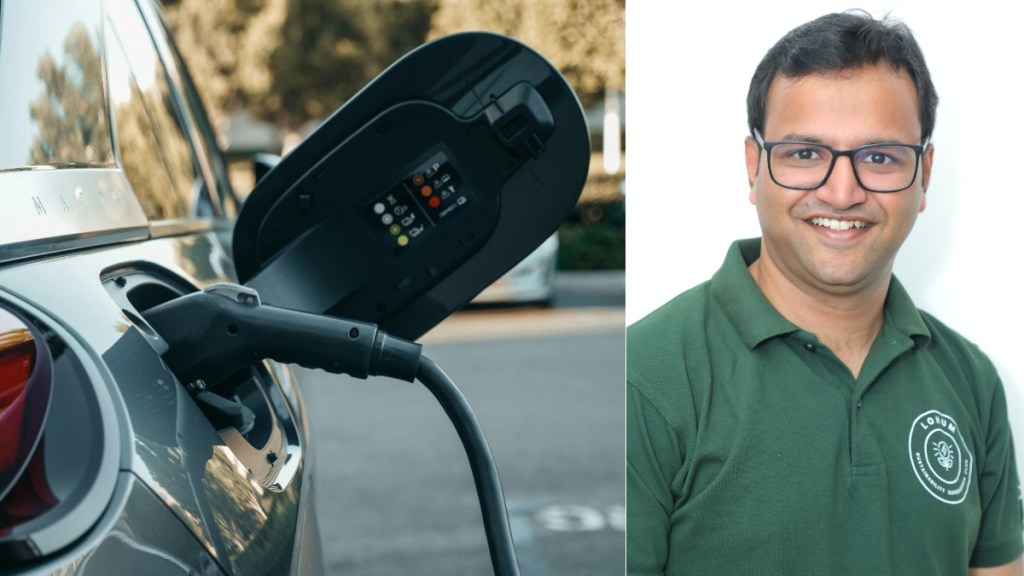By Chetan Jain
As the global push for electric vehicles (EVs) intensifies, sustainability within the EV ecosystem has become paramount. EV batteries, which typically last 8 to 10 years, experience a decline in range to about 70 to 80% of their original capacity, reaching End-of-Life (EoL) in their original application. This presents a unique opportunity for repurposing these batteries in second-life applications, offering both economic and environmental benefits.
Recent reports indicate that as global EV sales are projected to reach 17 million units in 2024, the potential for second-life applications grows significantly. Despite challenges such as market saturation and regulatory changes, the long-term outlook remains optimistic. Advancements in battery technology, supportive policies, and the increasing number of aging batteries contribute to a market projected to reach $8.2 billion by 2030.
Second-life batteries are especially promising for stationary energy storage systems (ESS), where they can balance supply and demand while supporting renewable energy storage.
In the US, utility providers are piloting large-scale projects to enhance grid resilience, while in Asia, these batteries are increasingly being used in off-grid rural areas and for telecommunication infrastructure. By repurposing EV batteries, we can reduce carbon emissions by 50% to 90% compared to manufacturing new ESS, thus minimizing waste and water usage.
This approach also helps cultivate a second-hand market for EVs, enhancing their overall economic feasibility and sustainability. Embracing second-life applications for EV batteries is a vital step toward sustainable energy solutions and a greener future.
Challenges in scaling second-life batteries
Despite the enormous potential of second-life batteries, significant challenges must be addressed for sustainable growth in this sector:
- Unscrupulous Players: Some industry actors neglect compliance regulations, compromising safety and damaging the sector’s reputation.
- Lack of Standardisation: The absence of uniform standards complicates the integration of second-life batteries into existing systems.
- Lack of Data: Comprehensive data is essential for informed decision-making but remains scarce.
- Collection and Traceability: Efficient logistics for collecting used batteries and tracking their history are crucial for compliance and safety.
- Insufficient Process and Product Standards: The industry is still navigating the complexities of developing formalized standards for second-life batteries.
- Estimating Remaining Life: Accurately assessing a battery’s remaining lifespan is critical for the economic feasibility of refurbishment and reuse.
Battery degradation varies by manufacturer, complicating standardization due to different chemistries like Lithium Iron Phosphate (LFP), Nickel Manganese Cobalt (NMC), and Nickel Cobalt Aluminum (NCA). This diversity challenges testing and refurbishment, often making them costly and labor-intensive. Companies like Lohum in India are reducing these costs through advanced battery lifecycle management research.
However, clear regulatory policies for EV battery reuse are still lacking in India. Advancements in artificial intelligence (AI) and machine learning are improving diagnostics, allowing for rapid battery health assessments that can lower refurbishment costs and enhance scalability. Addressing these challenges is crucial to fully realizing the potential of second-life batteries.
Applications beyond energy storage
Second-life EV batteries are increasingly versatile, extending beyond traditional grids. They provide portable electricity for disaster relief and power essential infrastructure in urban areas, enhancing energy resilience. In the automotive sector, repurposed batteries are being used for smaller electric vehicles like e-rickshaws and two-wheelers to meet urban transport demands. Companies like Nissan and Renault are integrating these batteries into their energy ecosystems, powering facilities, and maximizing battery lifespan for sustainability.
Sustainability and the circular economy
The reuse of EV batteries is essential for global sustainability. Repurposing used batteries helps reduce electronic waste and conserve crucial raw materials like lithium, cobalt, and nickel. As we near 2025, adopting a circular economy is vital to minimize the environmental impacts of electric vehicle adoption.
Battery repurposing directly increases EV adoption by addressing critical economic barriers related to battery cost and residual value. Transforming EV batteries from potential waste into valuable energy storage systems effectively spreads manufacturing costs over a longer revenue generation period. This approach allows manufacturers and owners to recover economic value from batteries that would otherwise be discarded, creating an attractive total cost of ownership model for potential EV buyers. Notably, IEEE research predicts the used EV battery market will grow from 50,000 to 150 million by 2035.
Repurposing converts a significant ownership cost into a potential revenue source, making electric vehicles an economically viable choice. The strategy fundamentally reduces battery lifecycle costs by generating additional revenue streams and extending the economic utility of each battery beyond its initial automotive application. Add in Battery-as-a-Service (BaaS), and the cost of EV ownership can dive another ~40%.
A report from EV Mechanica estimates that second-life battery solutions could cut global lithium demand by 15-20% by 2035, easing pressures on mining and addressing environmental challenges linked to resource extraction. Sustainable battery reuse is necessary for a more environmentally responsible future in transportation.
The future of second-life EV batteries hinges on collaboration among automakers, energy providers, and policymakers. To scale this emerging industry, clear regulations and incentives for collection, testing, and deployment are essential. Leading companies like Tesla and Toyota are investing in closed-loop ecosystems to repurpose used batteries, fostering sustainability.
As EV adoption grows and battery technology advances, second-life applications are likely to expand into smart cities, defense, and telecommunications. By 2030, these batteries could be integral to global energy infrastructure, supporting renewable energy initiatives and reducing fossil fuel dependence.
Second-life batteries play a crucial role in improving the sustainability of electric vehicles (EVs) by offering a low-cost energy storage solution. Their use not only benefits the environment but also addresses the need for sustainable energy alternatives. As we approach 2025, it is vital for industry leaders and policymakers to harness this untapped resource. By extending the life cycle of EV batteries, we can create new economic opportunities and promote a resilient future for energy and transportation.
The author is Senior Vice President – Business Operations of LOHUM.
Disclaimer: Views expressed are personal and do not reflect the official position or policy of FinancialExpress.com. Reproducing this content without permission is prohibited.



















